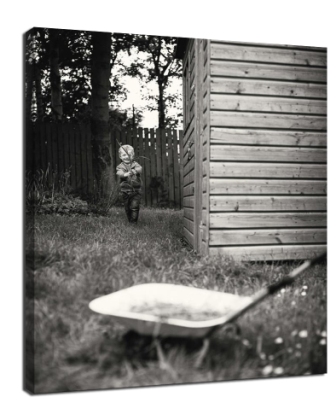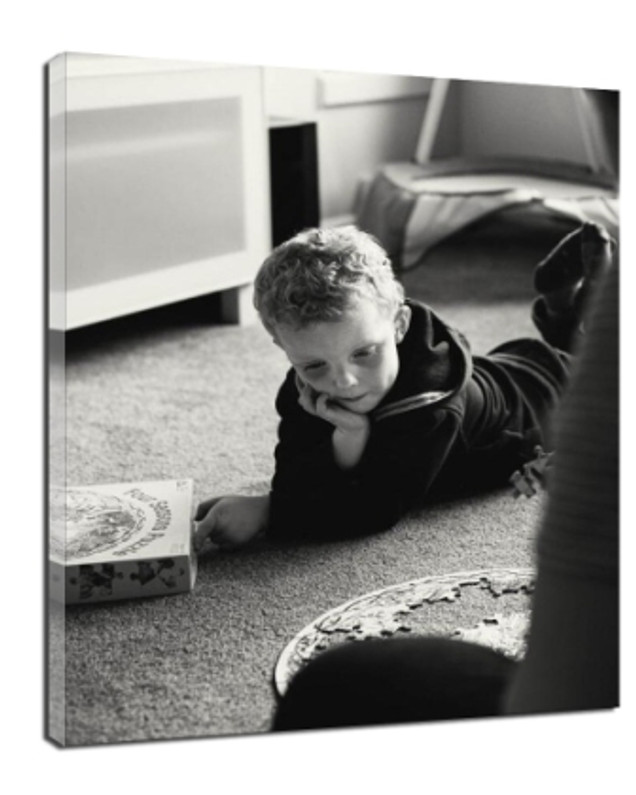Do portraits need foreground
Do you have such doubts why some people can always shoot a kind of good portrait? In fact, it's not just a matter of pressing the shutter button to get a good portrait. Sometimes understanding the foreground can elevate your portrait to a higher level
A great way to highlight your subject
When shooting a portrait, the "foreground" is the person or thing in the shot that is in front of or near the forefront of the subject. And clever foreground application, to a certain extent, can let the main body successful C bit debut! Here, we take framed foreground, guided foreground and blurred foreground as examples:
Framed foreground
When the foreground objects are used as shielding, the frame mode formed can effectively avoid the interference of debris around to the shooting. At this time, the focus of the viewer's vision is the main figure in the frame. Therefore, in the portrait shooting, to know how to make good use of a variety of surrounding frames, such as doors and Windows, the gap between the two objects or homemade "frame"... Using these frames to focus on the subject creates a sense of visual peep, focusing people's eyes and highlighting the subject.
Leading foreground
When you are in a scene and there are foreground objects with some extend ability (such as roads, railings, escalators, walls, etc.), try to arrange the subject in the extension of this type of foreground object.
When shooting, one side of the scene in front of the camera should be close to the subject, keeping a certain distance from the subject while keeping the extension trend of the picture. In this way, the focus of the viewer will be on the subject on the visual guide line.
Virtual type foreground
To highlight the subject, occasionally try to blur the foreground to get the final shot.
The so-called blurry foreground is that when the lens is close to the foreground object, it completely blurs the foreground and forms a group of virtual shadows with certain tones. Then the focus is placed on the figure to obtain a portrait of the blurry foreground.
It should be noted that the distance between the subject and the foreground should be properly adjusted during the shooting process in order to obtain the ideal image of the person.
02. Catalyst for atmosphere
A portrait with an emotional atmosphere is often more able to infect the viewer, so as to promote certain emotions of the viewer. And when you want to make the atmosphere of the picture more intense, in addition to the subject's expression control, the appropriate addition of some foreground elements can also maximize the emotional expression.
Gauze shade -
Transparent or it is translucent gauze shade, when sunshine is aspersed through it’s enter a room, dimensional instantaneous contain the romantic breath of a filar silk. As the gauze curtain in the foreground of shooting, the interweaving of light produces a vague feeling of obscurity. The subject's slightly sombre expression is accentuated by the vagueness.
As for the atmosphere, fireworks and fairy bars are good foreground options, especially for seaside portraits. Whether it is the beach scene with layers of waves rolled up, or a piece of quiet sea, fireworks, fairy rods released brilliant sparks, into the surrounding environment into a beautiful dreamy color. The blending of cold and warm in the picture further sublimates the atmosphere, and then presents the best state of emotional expression of the characters.
- Transparent umbrella
Rainy day with transparent umbrella as the foreground object, light spots to create a dream scene, an umbrella girl's story in the rain from this...
- Glass Windows -
In addition, in the process of portrait shooting, the subject is arranged behind the glass window with mottled shadows caused by sunlight and light refraction, which can also improve the picture atmosphere to a higher level.
03. An interesting right-hand man
Speaking of foreground, if your imagination is big enough, the use of foreground in some creative portrait photography can greatly increase the interest of the photos, so that you can take a good shot at the same time, also play an interesting way of taking pictures.

Here, let's take a look at how to make foreground fun:
Take the shell as the foreground, dig a "hole" in the middle, place the subject in the "hole", and create a visual sense of "painting within painting". Choose to focus on the front of the shell, get the main figure of the blur, the picture has a strange and interesting effect.
In the indoor scene, the water cup is placed on the table, and the subject lies face down on the table, looking at the cup with his eyes. Then, by adjusting the distance between the lens and the cup, a sense of strangeness is captured: human eyes are distorted and become two parallel lines, one black and one white, abstract and funny.
Using a misplaced perspective, the "pot" is placed in front of the subject. When viewers look at the past from a positive perspective, they have a visual sense of the subject being "cooked". The picture looks funny and fun.
Using the visual principle of "near, far and small", the toy snail was taken as the foreground object. The subject kept a certain distance from the snail and made some jumping movements in the distance. The photographer used a low Angle to capture the movements of the characters, and finally captured a creative portrait of "a person sitting on the snail".
So, by using the word "foreground," your portraits are destined to be different!
When you are in the process of portrait shooting, lack of inspiration, might as well pay attention to the surrounding things, looking for things that can make the foreground, change the conventional shooting thinking, maybe you will be surprised!
Recent Posts
-
Bring the Ocean Home: Queensland Great Barrier Reef Photos on Canvas Wall Art Prints
Australia’s Great Barrier Reef is one of the world’s most breathtaking natural wonders. Its kaleidos …16th Sep 2025 -
Capture the Beauty of Gold Coast with Photography on Canvas Prints
Why Choose Gold Coast Photography on Canvas Prints? Gold Coast is one of Australia’s most iconic des …16th Sep 2025 -
The Charm of Zebra Painting Art Prints: A Unique Touch for Your Home Décor
When it comes to adding a unique touch to your home décor, few things capture attention like zebra p …16th Sep 2025
